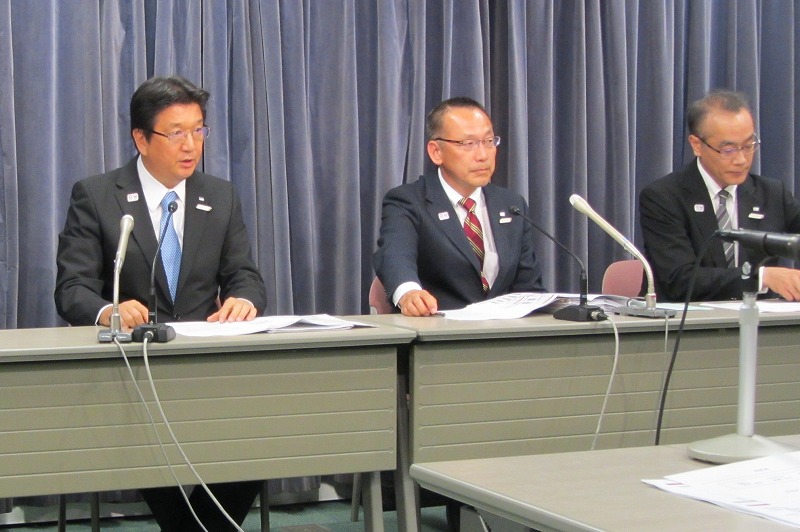
The JTB consolidated financial report for FY2016 ended March 31 2017 finds that the Japan’s largest travel company reduced both sales and profit. JTB finally posted sales of 1,297 billion JPY (-3.5%), operating income of 10.2 billion JPY (-37%), ordinary income of 13 billion JPY (-42%) and net income of 5.2 billion JPY (-58.4%). Sales resulted in year-on-year reduction for the first time in the past five fiscal years.
Hiroyuki Takahashi, JTB President, explained at a news conference that the financial downturn primarily resulted from lower demand of FIT than expected. Sales of ACE JTB, the domestic package travel products, and LOOK JTB, the overseas package travel products, were respectively down 4.8% and 5.5%.
JTB reduced sales of the overseas travel business by 3.8% to 162.3 billion JPY, although Japanese overseas travelers were up 6.8% in 2016. Takahashi said. “We had a 10% difference between them. The major reason was that we failed to catch up with the change of the market to FIT and online.
The same issue was found in the inbound travel business as well. JAPANiCAN.com, the booking site for international FIT, reduced customers by 9.4%, while customers for package brand Sunrise Tours and the corporate travel business increased. “We fundamentally have problems with power of the site and UI/UX on JAPANiCAN.com,” Takahashi said.
Meanwhile, JTB explained that leak of about 6.78 million private information, which happened in FY2016, had no direct influence on the financial result, however voluntary suspension of advertising and TV CM affected the reduction of sales. JTB has improved its security systems, though it did not disclose the budget.
For FY2017 ended March 31 2018, JTB has forecasted sales of 1,380 billion JPY (+6.4%), operating income of 9 billion JPY (-11.2%), ordinary income of 10 billion JPY (-23.1%) and net income of 4.4 billion JPY (-15.4%). Takahashi explained that the negative forecast results from more active investment for sustainable growth.
For FY2017, JTB is focusing its business resources on three fields of inbound travel, purchase and business development. For purchase, JTB is strengthening purchase of air seats, even LCC seats to meet FIT needs, and charters, although the efforts seem to be risks for JTB.
Takahashi said of the online business strategy, “Online selling is part of our omni-channels as a real agent. We do not have an idea to stand on the same stage as global OTAs like Expedia or Priceline.” JTB has already raised the online selling ratio of domestic lodgings to 30% and of LOOK JTB tours particularly for city tours to about 20% and is raising the ratios. “We are shifting selling of solo products and low-price products from real to online and keeping selling high-price products requiring consultations at face-to-face retail shops.
For the inbound travel, JTB will enrich JAPANiCAN.com and take advantage of plentiful inventories of lodgings in Japan and business partnerships with the online platform for local experience to compete with global OTAs.
For the business development, JTB has started strategic investment to Global Brain, an ICT venture fund, since December 2016 to accelerate its business approaches to start-ups. One of the fruits is an investment to Telexistence, a venture company for remote technologies with robots.
Financial highlights by business segment in FY2016
<Domestic travel>
Sales: 579.1 billion JPY (-4.2%), the second highest result ever
Gross margin: 118.1 billion JPY (-8.1%)
Sales by product: ACE JTB (-4.8%), Group (-1.2%), Media (-16.2%)
<Overseas travel>
Sales: 462.3 billion JPY (-3.8%), except loss of 24.1 billion yen due to reduction of fuel surcharges, JTB practically added 6.1 billion JPY.
Gross margin: 103.2 billion JPY (-0.2%)
Sales by product: LOOK JTB (-5.5%), Group (+2.2%), Media (-17.5%)
<Global travel including inbound travel>
Sales: 127.7 billion JPY (+4.3%)
Gross margin: 27.4 billion JPY (+3.1%)
Sales by product: Inbound (+9.2%), Global (-1.6%)




